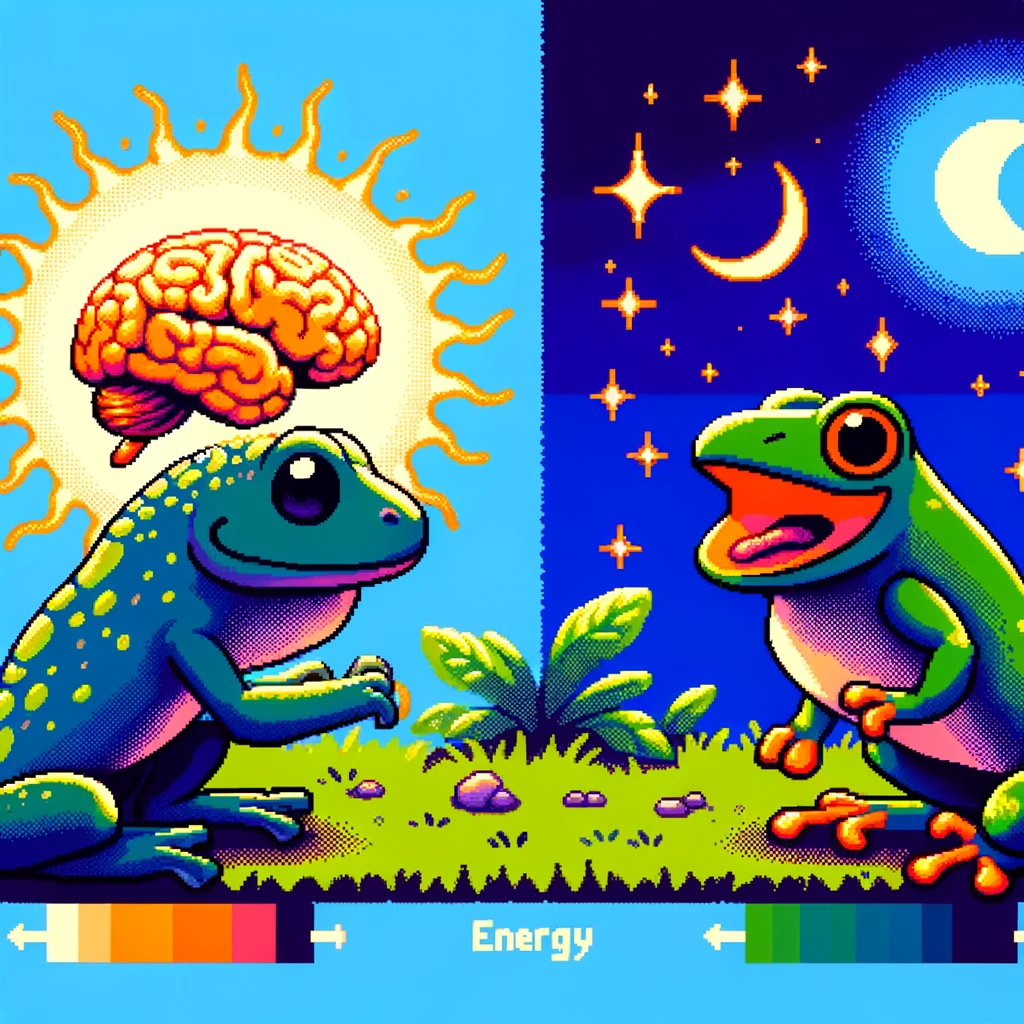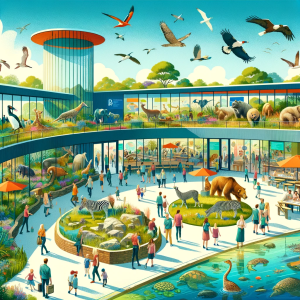
The Brain-Energy Connection in Amphibians and Reptiles
Have you ever wondered how animals with different lifestyles and environments evolve their brains? I know my boys do.
The article “Does the expensive brain hypothesis apply to amphibians and reptiles?” delves into this fascinating subject, breaking down complex biological concepts into understandable insights. Let’s explore what this research means for our cold-blooded companions and what it reveals about the evolution of brain size and energy demands.
Why Brain Size Matters
Brains are energy-intensive organs. The ‘expensive brain hypothesis’ suggests that brain size in animals, particularly in warm-blooded (endothermic) creatures like mammals and birds, is limited by their energy. Bigger brains offer cognitive and sensory benefits but come at a high energy cost. This study extends this hypothesis to cold-blooded (ectothermic) animals like amphibians and reptiles, investigating if similar energy constraints affect their brain development.
Ectotherms: A Different Energy Dynamic
Ectotherms, unlike endotherms, rely heavily on external heat sources (like the sun). This research highlights two key findings:
- Daytime Activity and Brain Size: A higher body temperature correlates with a larger brain size in species like lizards, which are active during the day and bask in the sun. This suggests that gaining heat externally without expending much energy allows these animals to allocate more energy to brain development.
- Nocturnal Life and Brain Constraints: Conversely, nocturnal species, which can’t bask in the sun and must spend energy to maintain body heat, tend to have smaller brains. This finding points to a trade-off between energy spent on staying warm and energy available for brain growth.
Challenging the Norm: No Clear Food Seasonality Impact
Interestingly, this study doesn’t find a significant link between seasonal food availability and brain size in ectotherms. This contrasts with endotherms, where food scarcity often leads to smaller brains. This could be because ectotherms can lower their activity and metabolic rate during food scarcity, reducing energy needs.
What This Means for Our Understanding of Brain Evolution
These findings are crucial for understanding how different animals evolve. They suggest that while the expensive brain hypothesis applies to ectotherms, the factors influencing brain size evolution in cold-blooded animals are distinct from those in warm-blooded animals. It opens up new questions about how environmental factors and lifestyle choices (like being nocturnal or diurnal) shape the evolutionary path of brain development.
Implications and Future Directions
This research underscores the complex interplay between environment, lifestyle, and brain development. It invites further exploration into how different species adapt to their ecological niches, particularly how amphibians and reptiles manage their energy budget to balance survival and cognitive functions.
Conclusion
The article provides a compelling look at how energy constraints influence brain size in ectotherms. It’s a fascinating read for anyone interested in animal evolution, biology, or understanding how big and small creatures adapt to their environments.
Embark on a Scientific Adventure:
Join ‘This Week in Science’ and explore the universe of knowledge! Our weekly newsletter is crafted for educators and enthusiasts, bringing you the latest and most exciting scientific discoveries. Every issue is packed with cutting-edge research, breakthroughs, and captivating stories from the world of science. Subscribe now for free and transform your teaching and learning experiences. Embark on your path to becoming more knowledgeable and connected with the ever-evolving world of science.



